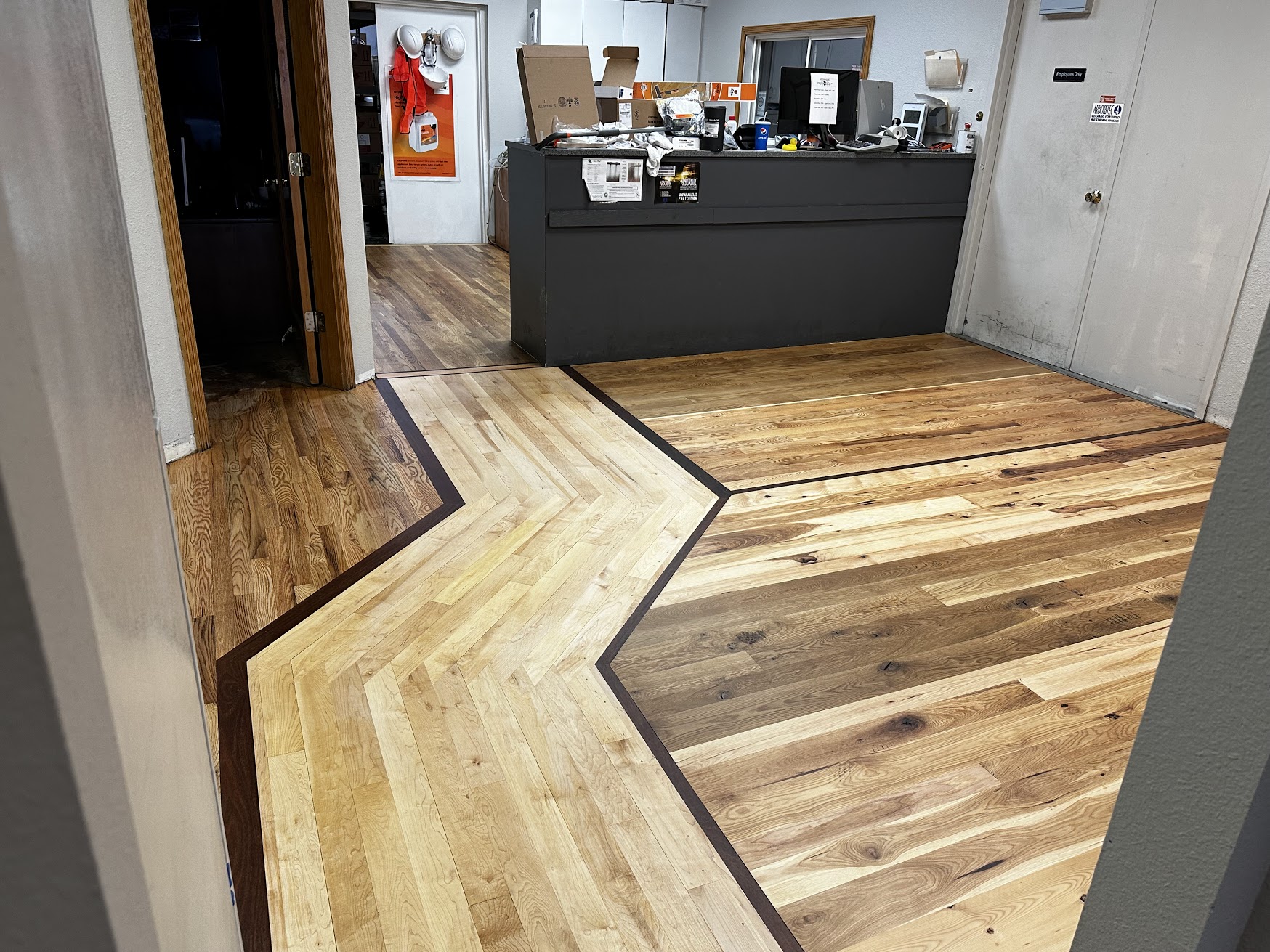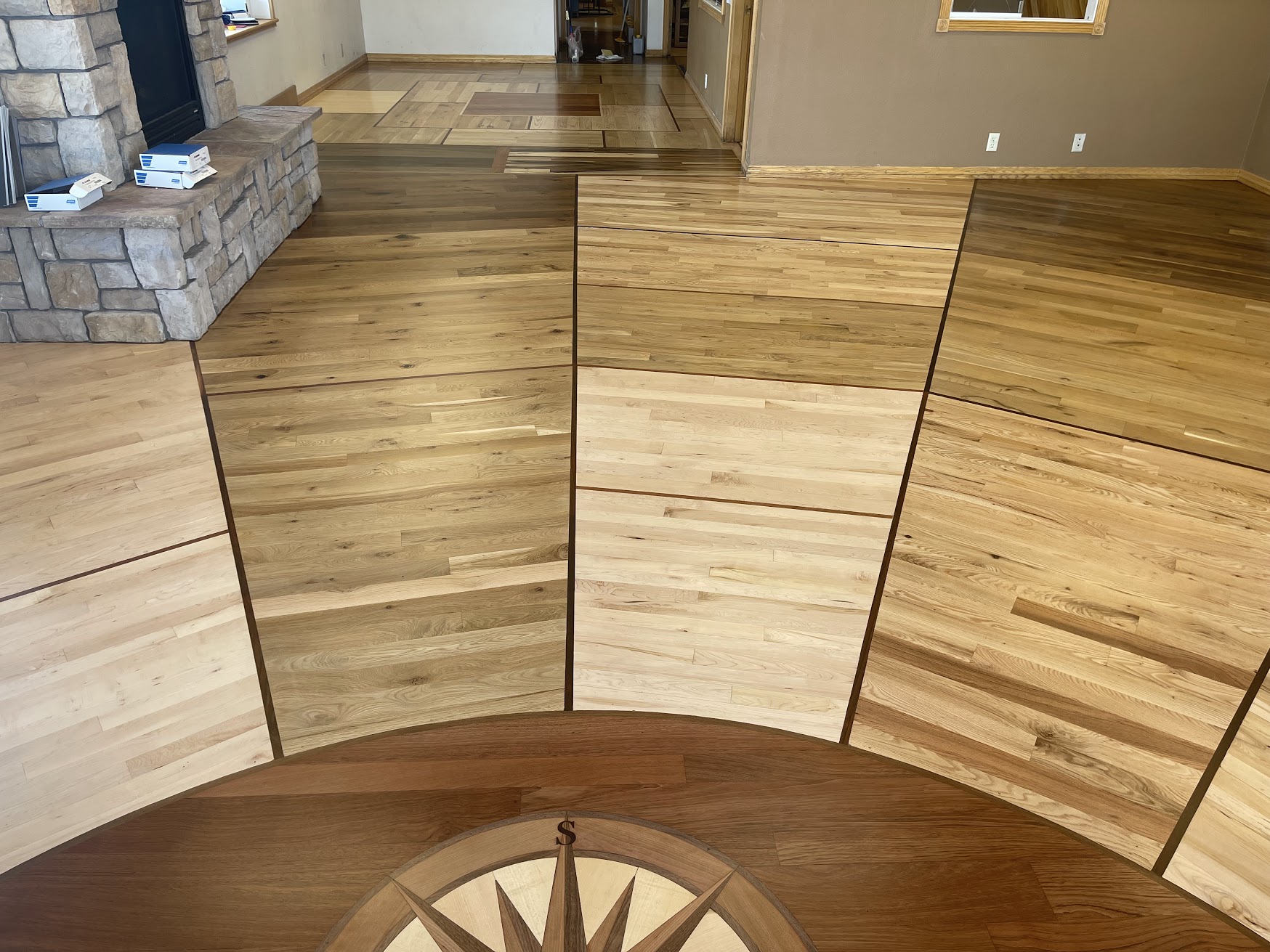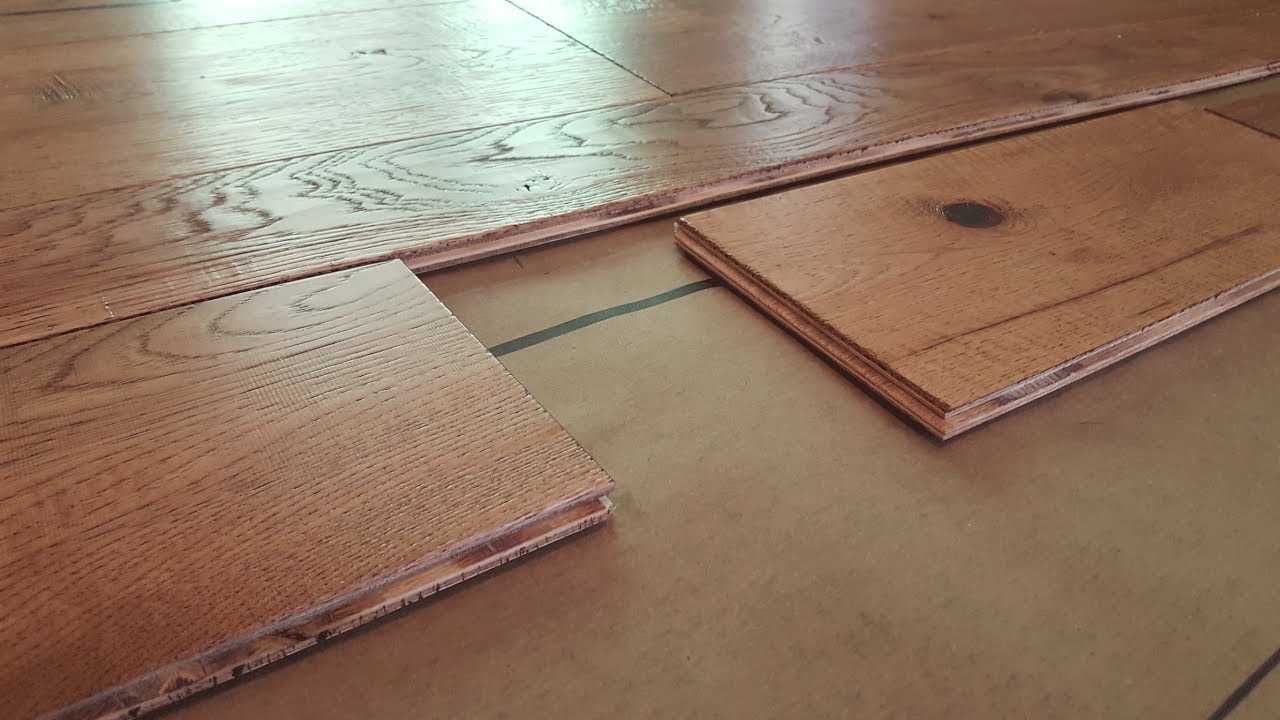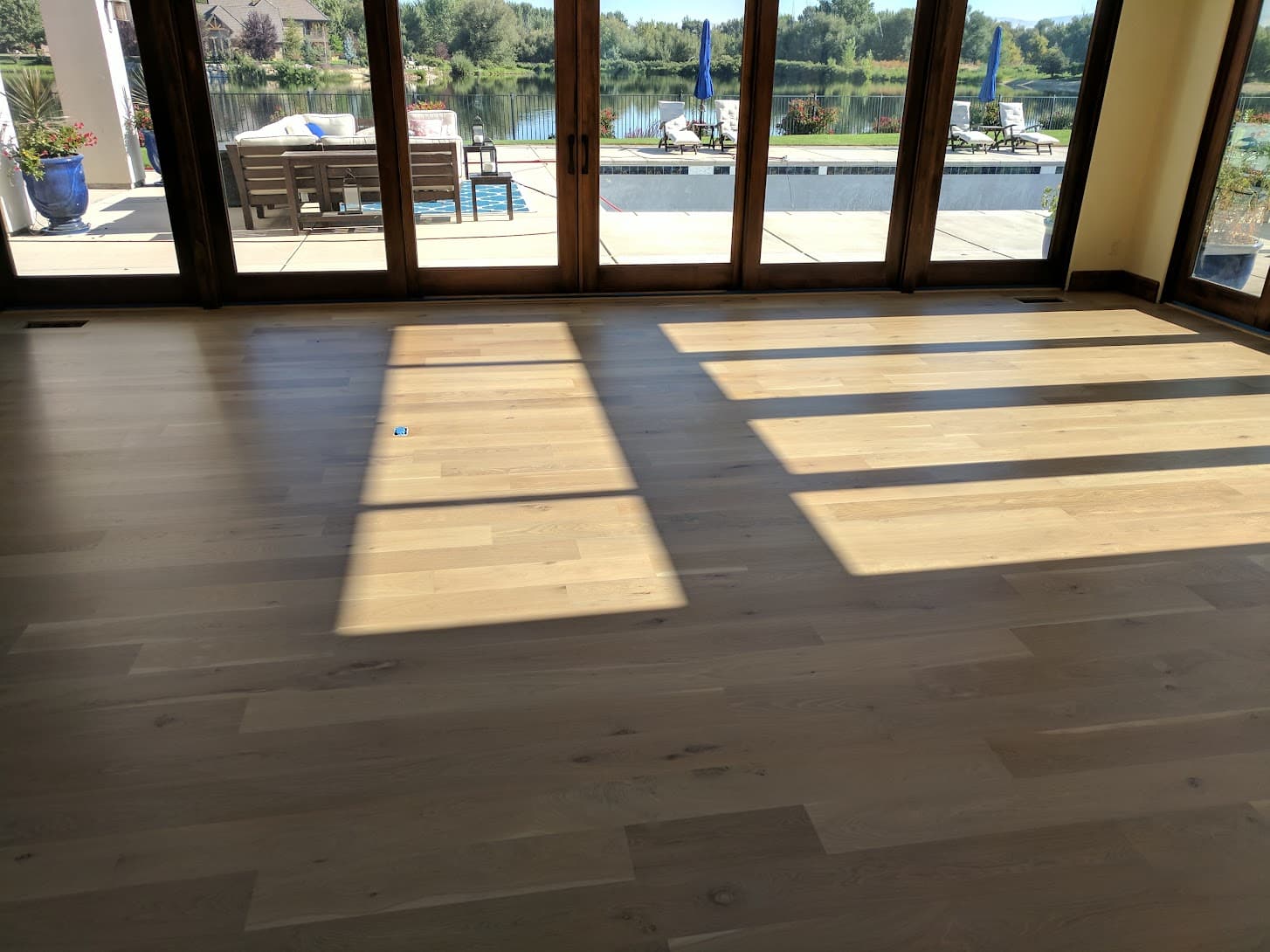This information is provided solely for informational purposes, and we strongly recommend consulting a professional flooring contractor for any luxury vinyl floor installation or repair projects. Experienced contractors possess the expertise and skills necessary to ensure the best results, safety, and longevity of your hardwood flooring investment.
Luxury vinyl plank flooring (LVP) has gained immense popularity in recent years due to its durability, versatility, and easy installation process. LVP is a click-together floor made of a combination of stone and PVC, which results in a durable and visually appealing flooring option. It typically floats over the subfloor, making it a favorite among DIY enthusiasts. In this comprehensive guide, we will walk you through the step-by-step process of installing luxury vinyl plank flooring, ensuring a professional and long-lasting result. This article will go over an overview of luxury vinyl floor installation and what to expect during the luxury vinyl installation.
Overview of Luxury Vinyl Plank Flooring
Luxury vinyl plank flooring, often referred to as LVP, is a type of flooring that is designed to mimic the appearance of hardwood (engineered hardwood as well) while offering superior durability and water resistance. Here are some key characteristics of LVP:
- Click-Together System: LVP is designed with a click-together installation system, making it easy for homeowners to install without the need for extensive adhesive or nails.
- Composition: LVP is typically made from a combination of stone and polyvinyl chloride (PVC) layers, resulting in a robust and resilient flooring material.
- Floating Installation: LVP is commonly installed as a floating floor, which means it is not directly attached to the subfloor. Instead, it “floats” above the surface, held in place by the interlocking planks.
- Versatility: Luxury vinyl plank flooring is suitable for installation in various parts of your home, including kitchens, bathrooms, living rooms, and bedrooms, thanks to its water-resistant properties.
- Quality Matters: To ensure a successful installation and long-term performance, it’s crucial to choose a reputable brand of luxury vinyl flooring. Cheap or inferior products can lead to problems down the road, including issues with the click system, core integrity, and resistance to temperature extremes.
Why Quality Matters When Doing Luxury Vinyl Floor Installation
The choice of flooring material can significantly impact the quality and longevity of your installation. Here are several reasons why it’s essential to select a high-quality luxury vinyl plank flooring product ( we recommend Cordalera) for your luxury vinyl floor installation:
- Click System Reliability: Cheap flooring products often come with poorly designed click systems that may fail after installation. A robust click system ensures that the planks stay securely locked together, preventing movement and separation.
- Core Durability: The core of the luxury vinyl plank is critical to its longevity. Inferior products may have cores that are prone to breakage, even when installed on a solid subfloor. A high-quality core can withstand various environmental conditions without compromising performance.
- Temperature Resistance: Low-quality LVP may not perform well in extreme hot or cold environments. Premium products are engineered to withstand temperature fluctuations without warping or becoming brittle.
- Warranty Assurance: Reputable luxury vinyl plank flooring brands typically offer comprehensive warranties, demonstrating their confidence in the product’s durability and performance. Choosing a respected brand minimizes the likelihood of warranty issues arising.
- Longevity and Noise Reduction: Inferior LVP brands can be noisy, develop gaps, and experience other issues as they age. High-quality options are designed to maintain their integrity over time, reducing the risk of problems such as creaking or separation.
The First Step in Luxury VInyl Floor Installation: Preparation
Before you begin installing your luxury vinyl plank flooring, thorough preparation is essential. Here are key steps to ensure your subfloor is ready for installation:
- Subfloor Flatness: The most critical aspect of subfloor preparation is ensuring it is perfectly flat. Use a straightedge or level to check for any high or low spots. Any deviations should be addressed with underlayment or self-leveling concrete to create a flat surface.
- Flatness Requirements: Subfloors should have no more than 3/16-inch deviation within a 10-foot radius. Failure to achieve this level of flatness can result in issues with the luxury vinyl planks over time.
- Debris Removal: Sweep and vacuum the subfloor to remove any debris, dust, or particles. A clean subfloor ensures a smooth and problem-free installation. Debris can lead to uneven surfaces, pops, and a poor click-lock connection.
Determining the Direction of the Floor
Choosing the direction in which to lay your luxury vinyl plank flooring for your luxury vinyl floor installation is an important decision that affects the overall aesthetics and functionality of the space. Here are some considerations:
- Floor Joists: Ideally, you should lay the planks across the floor joists for better stability and support. This helps distribute weight more evenly and reduces the chances of the floor flexing or squeaking.
- Entryway Direction: When entering a room, the floor should generally run parallel to your line of sight. This creates an inviting and visually appealing flow throughout the space.
Undercutting Doors and Obstructions
Undercutting door frames and other obstructions is a crucial step to achieve a professional and seamless look for your luxury vinyl plank flooring installation. Here’s why it matters:
- Finished Appearance: Undercutting the door frames allows the flooring to slide neatly underneath, providing a polished and visually pleasing finish.
- Preventing Gaps: Failure to undercut door frames and obstructions can result in gaps between the planks and the obstruction, which can be unsightly and challenging to fix.
- Ease of Installation: Without undercutting, you may struggle to make precise cuts around door frames and obstructions, making it more challenging to achieve a proper click-lock connection.
Removing Base and Shoe Molding
To ensure a secure and professional-looking luxury vinyl floor installation, it’s recommended to remove baseboards and shoe molding before installing luxury vinyl plank flooring. Here’s why this step is important:
- Closer to the Wall: Removing baseboards and shoe molding allows you to install the flooring closer to the wall, creating a snug fit.
- Seamless Appearance: This step ensures that the flooring planks extend all the way to the wall, resulting in a more seamless and aesthetically pleasing appearance.
Finding the Outer Wall and Measuring for Squareness
To achieve a visually balanced and square installation, it’s crucial to find the outer wall and measure the room correctly. Here’s how to do it:
- Outer Wall Reference: Start by identifying an outer wall of the room. This wall will serve as your reference point for measuring and establishing squareness.
- Square the Room: Measure from the outer wall to the opposite wall to ensure the room is square. By doing so, you can make adjustments to your layout to minimize any out-of-square issues near the walls.
- Balanced Appearance: Splitting the difference when dealing with out-of-square walls ensures that any deviations are minimal on both sides of the room. This results in a more balanced and visually appealing installation.
Using Spacers to Keep the Flooring Tight
Installing spacers along the walls is a crucial step to maintain the proper expansion gap and keep the luxury vinyl plank flooring tight during luxry vinyl floor installation. Here’s why spacers are essential:
- Expansion Gap: Spacers help create the necessary expansion gap between the flooring and the walls, allowing the planks to expand and contract with temperature and humidity changes.
- Preventing Movement: Without spacers, the flooring planks may shift or move during installation, potentially causing issues with the click-lock system and overall stability.
- Secure Starting Point: A secure and tight starting point is vital for achieving the best results with a floating floor like the luxury vinyl plank. Spacers ensure that the first row of planks is properly positioned.
Ensuring Proper Click-Lock Installation
Achieving a proper click-lock installation is critical for the long-term performance of your luxury vinyl plank flooring. Here’s why it matters:
- Floor Stability: Proper luxury vinyl floor installation ensures that the planks are securely locked together, preventing movement and separation over time.
- Common Issues: Improperly installed luxury vinyl planks can lead to various problems, including cracked tongues, moving boards, chipping, unusual sounds, cracking, and overall instability. If you notice any issues during installation, it’s essential to stop and address them immediately.
How to Cut Luxury Vinyl Plank Flooring
Cutting luxury vinyl plank flooring accurately is essential to achieve precise fits around corners, doorways, and obstructions. Here are several methods to cut LVP:
- Saw: Using a saw, such as a circular saw or miter saw, is an effective but messy way to make straight cuts on luxury vinyl planks. Be sure to use appropriate safety equipment when using power tools.
- Jigsaw: For more intricate cuts or curves, a jigsaw can be a handy tool. It allows for greater control when navigating corners and obstacles.
- Knife and Hammer: In some cases, a utility knife and a hammer can be used to make straight cuts. Score the plank with the knife and then snap it along the scored line.
When to Use Glue for Luxury Vinyl Flooring
While luxury vinyl plank flooring is designed to be installed as a floating floor without adhesive, there are instances where using glue may be necessary. However, this should be done sparingly and only in specific situations:
- Complex Portions: When dealing with particularly complex portions of the floor, such as tight corners or irregular shapes, a small amount of adhesive can help ensure a secure and lasting bond.
- Limited Use: Glue should only be used for a small number of boards where absolutely necessary. Overusing adhesive can compromise the floating nature of the floor and create unwanted stiffness.
In conclusion, luxury vinyl plank flooring is an excellent choice for anyone looking for a durable, attractive, and easy-to-install flooring option. By following these comprehensive installation steps and selecting a high-quality product, you can enjoy a beautiful and long-lasting luxury vinyl plank floor in your home. Remember that proper preparation, attention to detail, and adherence to best practices are key to a successful luxury vinyl floor installation. We recommend you hire a flooring contractor for the best outcome of your luxury vinyl plank flooring project. If you are in Atlanta, Boise or Spokane you can view their respective pages about luxury vinyl flooring installation as well to find a local contractor.
FAQ’s and Videos on Luxury Vinyl Floor installation
Unlike hardwood, LVP cannot be sanded and refinished; damaged sections usually need to be replaced.
Yes, LVP is pet-friendly as it is resistant to scratches and easy to clean.
While it is more scratch-resistant than hardwood, it can still be scratched by sharp objects.
LVP is generally more budget-friendly than hardwood flooring. If it isn’t hardwood flooring is superior.
Yes, LVP is waterproof and can be installed in wet areas without worry of damage.
LVP is highly durable, waterproof, easy to clean, and comes in a wide variety of styles and colors
LVP is typically thicker, more durable, and more realistic in appearance than traditional vinyl flooring.
Yes, LVP is compatible with radiant heating systems, but specific guidelines should be followed during installation to ensure proper performance.
Author Profile
- I have worked in hardwood flooring for the last 8 years. Use to run a company of residential crews as well as a company with gym flooring. If you need floor installation or refinishing help, I should have an answer or at least get you in the right direction.
Latest entries
 FlooringJuly 23, 2025How to Choose the Right Floor Finish: Satin vs Matte Finish?
FlooringJuly 23, 2025How to Choose the Right Floor Finish: Satin vs Matte Finish?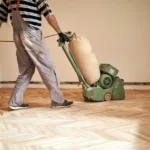 FlooringJuly 22, 2025How To Sand Floors Without Dust?
FlooringJuly 22, 2025How To Sand Floors Without Dust?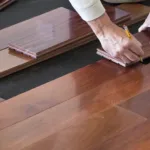 FlooringJuly 21, 2025Why Are More Contractors Switching To Pre-Finished Hardwood in 2025?
FlooringJuly 21, 2025Why Are More Contractors Switching To Pre-Finished Hardwood in 2025? FlooringJuly 20, 2025Water-Based vs Oil-Based Stains: Which Should You Recommend?
FlooringJuly 20, 2025Water-Based vs Oil-Based Stains: Which Should You Recommend?

